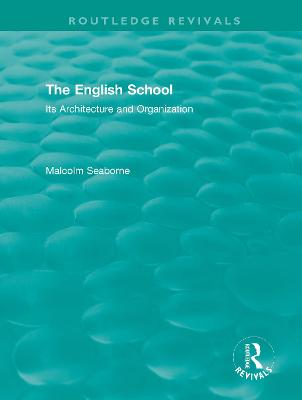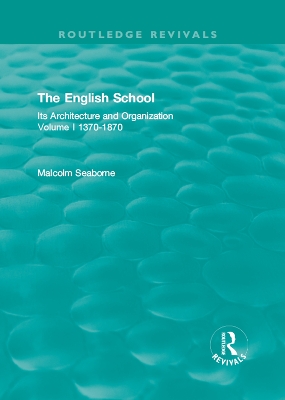Routledge Revivals: The English School
3 total works
Britain has a rich heritage of school buildings dating from the later Middle Ages to the present day. While some of these schools have attracted the attention of architectural historians, they have not previously been considered from the educational viewpoint. Even schools of little or no architectural interest are important sociologically, since the changing architecture of schools reflects changing ideas about how children should be educated and organized for teaching purposes.
In this second volume, originally published in 1977, Malcolm Seaborne and Roy Lowe carry the historical record into our own time. Like its predecessor, the volume studies the development of school architecture and its influence on the organization of the school, and relates architectural questions to the educational and social forces which influence the design of schools. The authors have chosen representative examples which illustrate the main trends in the development of school design and construction.
Britain has a rich heritage of school buildings dating from the later Middle Ages to the present day. While some of these schools have attracted the attention of architectural historians, they have not previously been considered from the educational viewpoint. Even schools of little or no architectural interest are important sociologically, since the changing architecture of schools reflects changing ideas about how children should be educated and organized for teaching purposes. Documentary material relating to education is often fragmentary, and buildings may thus constitute the only real source of knowledge about the development of particular schools and can also throw light on general educational history. Originally published in 1971 and 1977, these books are, therefore, not only a major contribution to architectural history but also a study in the development of educational ideas and practices from the fourteenth to the twentieth century.
Britain has a rich heritage of school buildings dating from the later Middle Ages to the present day. While some of these schools have attracted the attention of architectural historians, they have not previously been considered from the educational viewpoint. Even schools of little or no architectural interest are important sociologically, since the changing architecture of schools reflects changing ideas about how children should be educated and organized for teaching purposes. Documentary material relating to education is often fragmentary, and buildings may thus constitute the only real source of knowledge about the development of particular schools and can also throw light on general educational history. Originally published in 1971, this book is, therefore, not only a major contribution to architectural history but also a study in the development of educational ideas and practices from the fourteenth to the nineteenth century.


